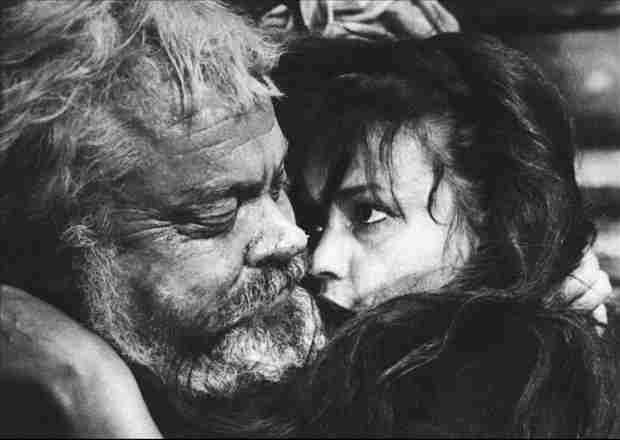Orson Welles once said that if any one of his films would qualify him for entry into heaven it would probably be Falstaff (also known as Chimes At Midnight.) As credentials for salvation go, Falstaff is probably as impeccable as any — it’s one of the greatest movies ever made, so great that it almost seems to inhabit a new medium all its own.
Visually it’s a torrent of dense, lyrical, consistently exhilarating images — an explosion of plastic invention unequaled since the days of silent cinema. But it’s a talkie, and its words are not just any words — they’re the words of Shakespeare. It’s not too much to say that Welles’ images, with their musical rhythms of movement within individual shots and from shot to shot, constitute a co-equal element with Shakespeare’s poetry. Image and word fly, dance, crack, soar and sing together. There has never been anything quite like it.

The soundtrack has technical flaws, however, which make it hard to appreciate the full scope of Welles’ achievement. The production was beset with severe financial problems — almost all the dialogue had to be dubbed, and Welles had to supervise the re-recording at a distance. The line readings are uniformly superb but the sync is not always perfect and the “room tone” surrounding the dubbed voices is inconsistent and often disorienting.
I don’t know if the original sound elements still exist — if they do, modern digital technology could certainly be applied to correct the flaws, though it would probably cost a small fortune.
As things stand, one needs to accept a slight disconnect between image and dialogue — which is no more than saying that the Parthenon has sustained a bit of damage through the years. One makes allowances.
The film is not available on DVD in this country. There is a barely acceptable all-region Brazilian edition in NTSC format which can be had online, but it’s not optimized for a widescreen monitor and the transfer of both sound and picture is mediocre. Still, if you’ve seen the film on a big screen, the Brazilian DVD can evoke the experience well enough.
I saw Falstaff at the Paris Theater in New York in the summer of my 17th year. During the battle scene my hair stood on end — I think I probably trembled with excitement. I know what cinema is, I thought to myself — the secret of it is here, in this film. It was more a gut feeling than a practical or intellectual insight, but the moment has inspired all my thinking about movies ever since. A hundred years from now people will still be studying Falstaff in an effort to apprehend the craft and mystery of movies.
